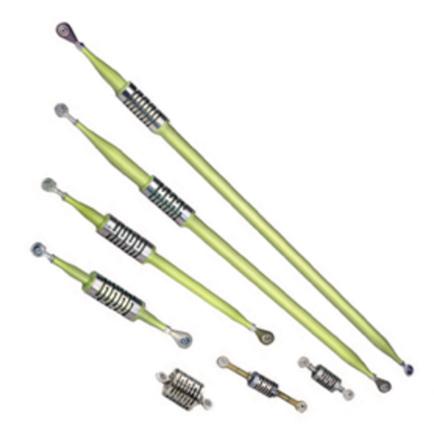LVDT Force Sensor
Force Sensors
Kavlico force transducers consist of precisely machined spring and internally placed LVDT(s). The compression or tension movement of the spring deflects the LVDT. The voltage output and signal is calibrated to correspond to the force input. Force sensors can be supplied as single or multiple channel devices. All Kavlico force transducer are custom designed for the load and performance requirements of each aircraft platform. As the world’s largest supplier of aircraft force transducers, Kavlico force transducers are used in a multitude of commercial and military aircraft applications.
Distributors Stock
Need more information?
Contact us to request pricing, availability and customization options
Contact UsFeatures
• Unique, ultra lightweight and compact designs
• Ideal for cockpit control applications
• Manufactured with high reliability LVDT sensors
• Extremely low zero-shift over the operating temperature range
• Low TC over temperature range of -80°F to +400°F
• Superior long-term stability over transducer life span
• Built-in bi-directional mechanical stop
• Wide operating load range of ±10 lbs. to ±2,000 lbs. (tension and
compression
• Qualified per RTCA/DO-160 and MIL-STD-810
• Balanced output in tension and compression
• Dual load paths
• High reliability (MTBF of 1,000,000 hrs. typical)
Downloads
Specifications
• Pilot input load for flight data recorder
• Pilot input load for flight control electronics
• Aircraft linkage for limiting flight loads
Sensitivity
The slope of a best-fit straight line drawn through the output data. A force sensor is a radiometric device and the sensitivity should be expressed as the ratio of the volts out (V1-V2), per volt in (VE), per pound of displacement (V/V/lbs).
Linearity
The maximum deviation of any calibration point from a specified straight line. The error is usually expressed as a percentage of Full Scale output. The most commonly used line is the “Best Fit Straight Line” (BFSL).
Crosstalk
The term used for multiple channel units to describe the voltage produced in the secondary of one channel by the primary excitation of another channel.
Accuracy
The maximum allowed deviation from the nominal output, when the output is taken per the previously stated sensitivity definition. Typically specified as a ± percent of full scale.
Tracking
The uniformity of performance between channels of multiple channel force sensors. Each channel’s output is compared and the maximum difference between any two channels is termed “tracking.” Tracking is normally expressed as a percentage of Full Scale.
Full Scale
The algebraic difference between the nominal outputs at the ends of the electrical stroke. (Ref. Instrument Society of America, ISA - S37.1 - 1975)
Temperature Coefficient
The % change in the force sensor sensitivity over a temperature range.
Usually defined as a percentage per 100°F max.
Example: 0.25%/100°F.

